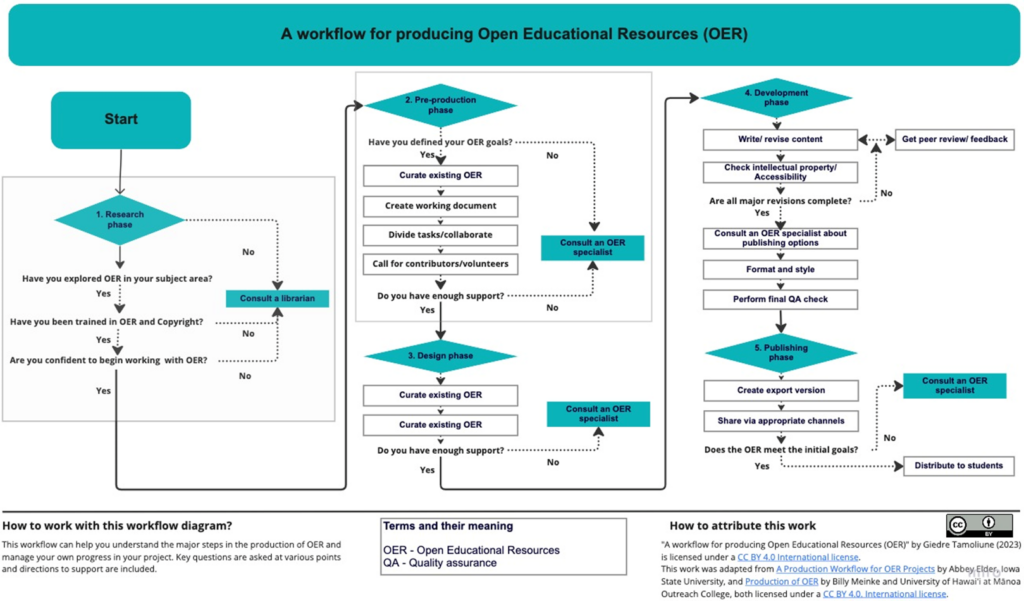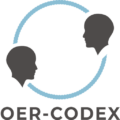| Watch the video “A Review of Effectiveness and Perceptions of Open Educational Resources as Compared to Textbooks” [4:40] | |
| Watch this video, where OER experts share concise information on how to turn a Resource into an Open Educational Resource (5:10 min)https://www.youtube.com/watch?v=CUVW5fhQP2k |
The process of creating an OER is different from that of producing educational material. Educational material is usually published and distributed by traditional publishers, and the material itself is distributed by you to peers or other students. Whereas when you create an OER you freely and openly make your expertise available to all stakeholders around the world, thus making the OER the property of the community. This resource can be used, changed, and adapted according to the needs, attitudes, and understanding of each individual or target group, often without you even knowing it.
If you can’t find the information and content you need from the vast array of existing resources, creating your open educational resource can be a useful and relevant solution. This can be particularly relevant for a specific subject area or topic. We would like to point out that each OER is different and changes or impacts in the learning process rarely happen simply because a particular OER is used. Experience shows that the same OERs are used in different higher education courses, but it is important to remember that the teacher’s domain knowledge and pedagogical decisions on how to use the chosen OERs appropriately for teaching and learning are important here. At the same time, the learning needs, styles, and abilities of each group of learners are different, and so is the application of the OER. This allows for a broader understanding of why and how OER is valuable for teaching and learning.
A teacher can adapt an existing OER or create and share a new one, depending on his/her needs. The OER you create does not have to be in book format, but can also be a study guide, a course syllabus, videos, web pages, methodological guidelines, tests, infographics, etc. To give other members of the community the right to adapt, modify and use the OER you have created, do not forget to share the OER version that can be edited. At the same time, consider maintaining access to your OER so that you can update the content or correct any errors or inconsistencies when needed. In this way, you can contribute to the quality assurance, relevance, and sustainability of the OER you produce.
| Watch the video Creating Open Educational Resources: Tips for instructors creating OER (video by Abbey Elder is licensed under a CC BY 4.0 International license). |
Where to begin?
There are several typical scenarios for using OERs in teaching and learning:

Despite the scenario that is selected, it is recommended to take some time to rethink the following aspects:
- If the resource that you need has already been created by others
- if your teaching and learning material can be adapted for use as OER
- if you plan to develop additional materials as supplements to your OER
- if an OER can be used in any other courses
- if you know where OER can be hosted
- if there is any support that you might be needed throughout the OER production process (adapted from The OER Starter Kit by Abbey, K. Elder, licensed under a Creative Commons Attribution 4.0 International License)
Main steps to follow for creating an OER:
To ensure a consistent process of OER production Meinke and the University of Hawaii (2017) developed the Production of Open Educational Resources (OER) flowchart, proposing a five-step strategy for a successful OER development process (see fig. 1 “A Workflow for producing Open Educational Resources (OERs)” provided as a separate document).

